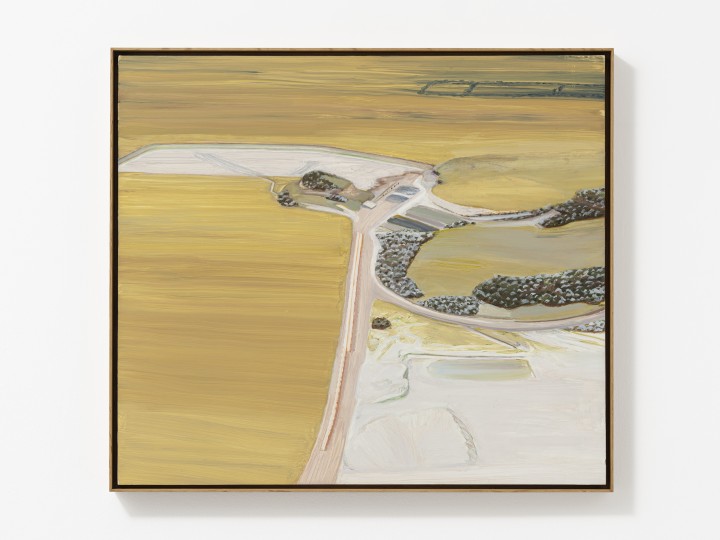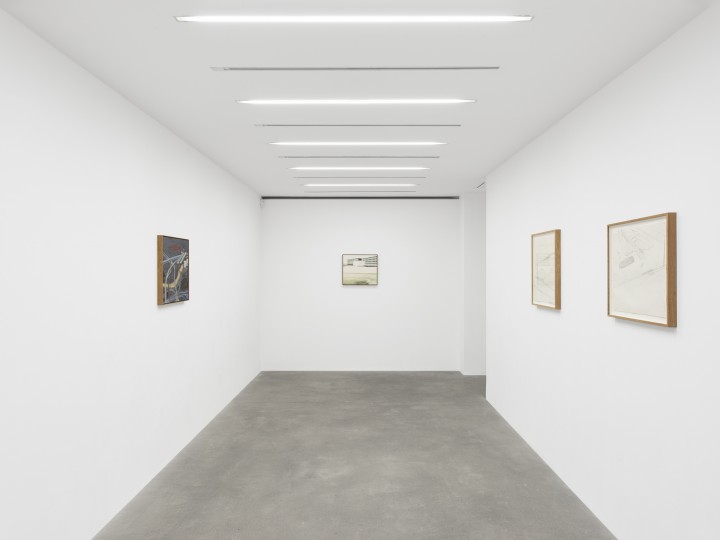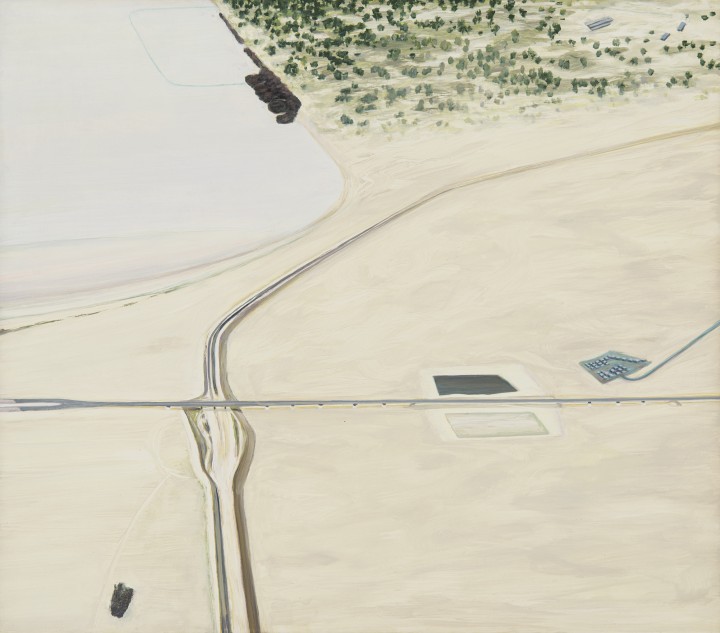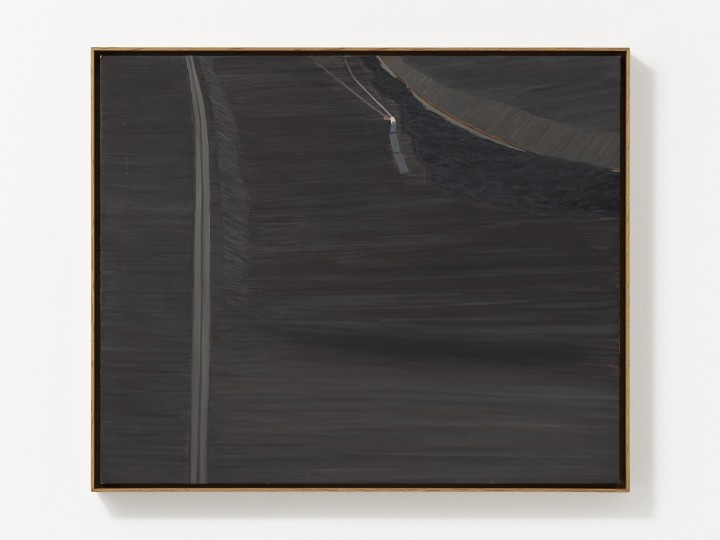Scottish Art News
Latest news
Magazine
News & Press
Publications
Carol Rhodes
By Gemma Batchelor, 11.05.2021

Alison Jacques Gallery revealed their representation of the Carol Rhodes Estate last year, a timely announcement as Kelvingrove gears up to the opening of the first posthumous institutional exhibition of the artist’s work as part of Glasgow International this summer. This gallery display can be seen as a small, but exquisite, taster of what is to come.
Edinburgh born Carol Rhodes (1959 – 2018) studied at the Glasgow School of Art from 1977 to 1982. On graduation she set aside her artistic career to work in the field of social and political activism, before becoming involved with Transmission Gallery and the grassroots artistic circles it was central to. Rhodes thus resumed painting in the 1990s, working in a studio at Tramway whilst teaching at GSA.
 Carol Rhodes, Alison Jacques Gallery, 2021. Courtesy: Alison Jacques Gallery, London
Carol Rhodes, Alison Jacques Gallery, 2021. Courtesy: Alison Jacques Gallery, London
It was in this studio that Rhodes began to develop her individualistic body of paintings that explore the encroachment of human activity upon natural landscapes. She focused mostly on the marginal areas that sit in between city and countryside, where the industrial estates, reservoirs and airports lie. The sort of areas that are mostly driven through at high speed, rarely being the intended destination (which Rhodes referred to as ‘hidden areas’ or ‘left-over land’). Her liminal landscapes were painted often from an aerial perspective, pieced together from photographs, urban plans and geographical maps.
The exhibition is a quiet one, with modestly sized, intimate paintings and drawings hanging in the truest sense of a white cube. In this space, Rhodes’ distinctive works encourage one-on-one conversations, drawing the viewer up close for inspection. Their intimacy is heightened by the visible traces of the artist, whether in the smudges of graphite on paper or the tape remnants left at the edges of the paper, reminders of their once casual use (Rhodes only began exhibiting her sketches as standalone works from 2006). It’s indeed poignant to know that Rhode spoke of her landscapes as self-portraits.
 Carol Rhodes, Sea and Motorway, 1998. Courtesy: Alison Jacques Gallery, London © Carol Rhodes Estate
Carol Rhodes, Sea and Motorway, 1998. Courtesy: Alison Jacques Gallery, London © Carol Rhodes Estate
On looking closely, both at the paintings and drawings, an intriguing contrast between the scale of the works and the subject matter becomes apparent: vast landscapes observed from the skies are contained within small wooden frames that could be contained within outstretched arms. A second dichotomy plays out in the balance between abstraction and detail. Large corners of canvases might be painted in broad strokes of colour, or left empty on the paper, broken up by individual elements of industry, as if floating in a sea.
In this way, there is something lonely about these structures, so that the viewing of these paintings doesn’t sit comfortably; a discomfort that becomes greater as the improbability of the landscapes becomes more apparent. Roads seem to lead nowhere, whilst structures remain isolated without points of entrance. There is a sense of the uncanny, like landscapes created in a dream that don’t quite make sense.
Despite their subtlety, the environmental morals of Rhodes’ subject matter certainly weigh on the mind of the viewer on looking at these paintings. It is hard not to think about our impact on the environment in every action we take these days, making Rhodes’ work ever more relevant.
 Carol Rhodes, Road and Valley, 1999. Courtesy: Alison Jacques Gallery, London © Carol Rhodes Estate
Carol Rhodes, Road and Valley, 1999. Courtesy: Alison Jacques Gallery, London © Carol Rhodes Estate
Carol Rhodes runs until 29th May at Alison Jacques Gallery, London. To coincide with the exhibition, Sara Barker (artist), Oliver Basciano (editor-at-large, ArtReview) and Jennifer Higgie (editor-at-large, frieze) will discuss the life and work of Carol Rhodes in a virtual talk on Tuesday 18 May at 6pm GMT. Discover more of her work in the Fleming Collection.




